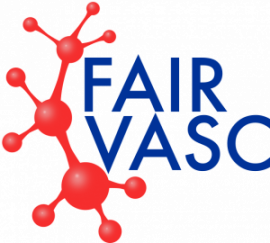The FAIRVASC concept is very much driven by a combination of clinicians and patient organisations, brought together under the aegis of EUVAS, ERN-RITA, RIPAG and other bodies, and sharing a common understanding of how important it is to combine AAV registries, so that robust research can take place. The registries themselves are often established or supported by the PAOs (e.g. UKIVAS is supported by Vasculitis UK), and leading clinicians and scientists frequently have key roles in the PAOs. Thus, patient organisations are already tightly interwoven into the AAV research fabric, and contribute at every stage, from the original project idea to the dissemination of the end results.
The FAIRVASC consortium includes the European umbrella group for AAV patient advocacy organisations – Vasculitis International(https://www.vasculitisint.com) – represented by its president, Peter Verhoeven, who also founded the ERN-RITA Patient Advisory Group (RIPAG). Mr Verhoeven, who also leads the Dutch PAO, Vasculitis Stichting, is supported throughout the project by Julie Power of Vasculitis Ireland Awareness (VIA) and John Mills of Vasculitis UK. This PAO team has helped to define the project concept and value proposition, particularly as it offers benefits to patients and their families.
Their role during the project will be to ensure that patient priorities and perspectives are considered wherever there is a ‘touch point’ between the research and the patients:
- Validate the project’s ethical, privacy and confidentiality approach, as regards patient data (this supplements our compliance with GDPR and related privacy legislation at national and EU levels).
- Review and endorse the study design, to maximise patient value, so that the anticipated results of the study are usable and valuable to the patient.
- Assist in the mapping of patient-centric data from registries to RDF triple-stores.
- Ensure that any patient-reported outcome measures recorded in the registries are taken into account, particularly in personalised risk scoring and/or routes to personalised medicine.
- Work with the clinicians and IT teams to include patient-reported outcomes (AAV-PRO) in the data models of new and existing registries, so that these outcome measures become a standard part of AAV registries.
- Input into analysis of research results, to ensure that this analysis produces information which is valuable and relevant to patients and their families.
- Communicate and disseminate the project work and results to patients, PAOs, policy makers and healthcare providers. This last task is critically important – the PAO team are among the best-known AAV patient advocates in Europe and represent a ‘trusted voice’ for AAV patients, families and organisations. Their message and influence will raise awareness and drive demand for research (and, eventually, therapeutic approaches) that take advantage of the new opportunities opened by FAIRVASC.
The PAO team will also contribute further to FAIRVASC by supporting the establishment of AAV registries in more countries across Europe and encouraging the use of FAIRVASC technologies in such registries. This includes collaboration in the design and delivery of template registries and associated training materials and events, targeting new registry locations and the addition of existing registries to the FAIRVASC resource.
